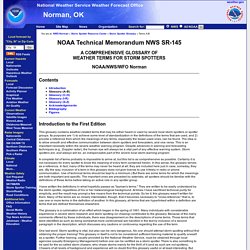

Wilhelm II. Kaiser Wilhelm II was de facto head of Germany during World War One.

When World War One broke out in August 1914 Wilhelm was emperor with great power. When the war ended it ended for Wilhelm with a self-imposed exile in the Netherlands and little if any influence in Weimar Germany. Wilhelm was born in 1859. He was born with a withered left arm and some historians believe that it was this physical handicap that helped to shape his personality as an adult. Wilhelm constantly saw himself as having to prove himself – whether it was mastering the art of horse riding or by his constant habit of wearing a military uniform when in public as a statement of his manliness. Wilhelm was related to the British Royal Family as his mother, ‘Vicky’, was the Princess Royal of Great Britain, the eldest child of Queen Victoria and the Prince Consort. When Fritz ascended the throne in 1888, he was seriously ill with cancer. What were these Prussian values and virtues? October 2012.
Tornado Alley. Understanding monsoons. A monsoon is a seasonal change in the direction of the prevailing, or strongest, winds of a region.

Monsoons cause wet and dry seasons throughout much of the tropics. Monsoons are most often associated with the Indian Ocean. Monsoons always blow from cold to warm regions. The summer monsoon and the winter monsoon determine the climate for most of India and Southeast Asia. Summer Monsoon The summer monsoon is associated with heavy rainfall. India and Southeast Asia depend on the summer monsoon.
Industry in India and Southeast Asia also relies on the summer monsoon. When the summer monsoon is late or weak, the regions economy suffers. Heavy summer monsoons can cause great damage. In 2005, a strong monsoon devastated western India. Winter Monsoon The Indian Oceans winter monsoon, which lasts from October to April, is less well-known than its rainy summer equivalent. Not all winter monsoons are dry, however.
Other Monsoons. Tropical Storms. Glossary. NOAA/NWS/WFO Norman Contents Introduction to the First Edition This glossary contains weather-related terms that may be either heard or used by severe local storm spotters or spotter groups.

Its purposes are 1) to achieve some level of standardization in the definitions of the terms that are used, and 2) provide a reference from which the meanings of any terms, especially the lesser-used ones, can be found. The idea is to allow smooth and effective communication between storm spotters and forecasters, and vice versa. A complete list of terms probably is impossible to arrive at, but this list is as comprehensive as possible. I have written the definitions in what hopefully passes as "layman's terms. " The glossary is a culmination of an effort which began in the spring of 1991. One last word: Storm spotting is vital, but also can be very dangerous. Introduction to the Second Edition I certainly do not want to turn the glossary into a meteorological textbook for spotters (or anyone else). Disasters - man made. Image: Deepwater Horizon fire– April 22 2010 by US Coast Guard on Flickr We have selected these online resources to support you with information on man made disasters such as nuclear accidents, oil spills and the Great smog in London.SCIS 1702157 See also Disasters – New Zealand, Disaster preparedness/civil defence.

The Aral Sea Crisis The Aral Sea in Central Asia was the world’s fourth largest salt lake up until the last quarter of the 20th century. Human induced changes have resulted in a dramatic reduction in its size and an increase in salinity. Suggested level: intermediate, secondarywww.columbia.edu/~tmt2120/introduction.htm Chernobyl Accident 1986 Nuclear accidents have occurred at Chernobyl, Three Mile Island and Fukushima nuclear power plants. Suggested level: secondarywww.world-nuclear.org/info/Safety-and-Security/Safety-of-Plants/Chernobyl-Accident/ Deepwater Horizon Oil Spill. List of disasters in New Zealand by death toll - The Grid - FInd Anything in New Zealand. List of disasters in New Zealand by death toll This is a list of New Zealand disasters by death toll, listing major disasters (excluding epidemics and acts of war) which occurred in New Zealand and its territories or involved a significant number of New Zealand citizens, in a specific incident, where the loss of life was 10 or more.

List of disasters Hastings Post Office after the 1931 Hawke’s Bay earthquake. Notre-Dame: Massive fire ravages Paris cathedral. Media playback is unsupported on your device A major fire has engulfed the medieval cathedral of Notre-Dame in Paris, one of France's most famous landmarks.

The 850-year-old Gothic building's spire and roof have collapsed but the main structure, including the two bell towers, has been saved, officials say. Firefighters are still working to contain the blaze as teams try to salvage the artwork stored inside. President Emmanuel Macron called it a "terrible tragedy". Firefighters 'could not find fire' at Notre Dame 23 minutes before blaze.
The treasures that survived the devastating Notre Dame inferno have been revealed - with the great organ and several priceless paintings rumoured been destroyed.

Franck Riester, France's culture minister, said on Tuesday that the cathedral's main organ 'seems to be quite affected' by the blaze while the fate of several other artefacts remains unknown.